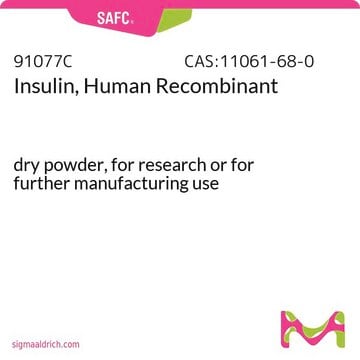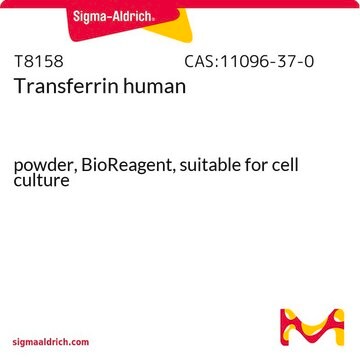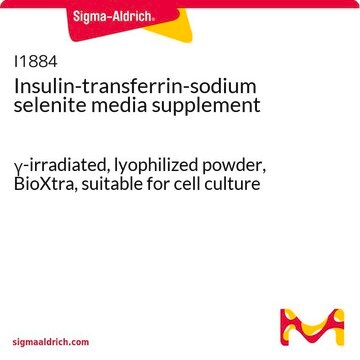This product is not a sterile preparation. If the intended use, such as in cell culture, requires a sterile environment, then the stock solution would require filter sterilization. Typically, this is achieved by filtration through a 0.22 um membrane. Alternatively, product S9133 is a γ-irradiated, sterile powder. When reconstituted aseptically using sterile water, this product may be added directly to culture medium.
Please see the link below to review this product option:
https://www.sigmaaldrich.com/product/sigma/s9133
S5261
Sodium selenite
BioReagent, suitable for cell culture, ≥98%
Synonyme(s) :
Selenious acid, Sodium salt
Sélectionner une taille de conditionnement
Sélectionner une taille de conditionnement
About This Item
Produits recommandés
Source biologique
synthetic (inorganic)
Niveau de qualité
Gamme de produits
BioReagent
Essai
≥98%
Forme
powder
Technique(s)
cell culture | mammalian: suitable
Pf
>350 °C (lit.)
Solubilité
water: 50 mg/mL, clear to slightly hazy, colorless to faintly yellow
Chaîne SMILES
[Na+].[Na+].[O-][Se]([O-])=O
InChI
1S/2Na.H2O3Se/c;;1-4(2)3/h;;(H2,1,2,3)/q2*+1;/p-2
Clé InChI
BVTBRVFYZUCAKH-UHFFFAOYSA-L
Vous recherchez des produits similaires ? Visite Guide de comparaison des produits
Application
Mention d'avertissement
Danger
Mentions de danger
Conseils de prudence
Classification des risques
Acute Tox. 2 Inhalation - Acute Tox. 2 Oral - Aquatic Chronic 2 - Eye Irrit. 2 - Skin Irrit. 2 - Skin Sens. 1
Risques supp
Code de la classe de stockage
6.1A - Combustible acute toxic Cat. 1 and 2 / very toxic hazardous materials
Classe de danger pour l'eau (WGK)
WGK 2
Point d'éclair (°F)
Not applicable
Point d'éclair (°C)
Not applicable
Équipement de protection individuelle
Eyeshields, Faceshields, Gloves, type P3 (EN 143) respirator cartridges
Faites votre choix parmi les versions les plus récentes :
Déjà en possession de ce produit ?
Retrouvez la documentation relative aux produits que vous avez récemment achetés dans la Bibliothèque de documents.
Les clients ont également consulté
Articles
Antioxidants protect biological systems from oxidative damage produced by oxygen-containing free radicals and from redoxactive transition metal ions such as iron, copper, and cadmium.
-
need filtration (0.2um) after preparation?
1 réponse-
Utile ?
-
-
How long does an aliquot of this product in water remain stable at -20 degrees Celsius?
1 réponse-
As mentioned on the Product Datasheet, stock solutions of sodium selenite may be frozen. Working aliquots remain active for 30 days at 2-8 °C. The Datasheet can accessed in the DOCUMENTATION section under 'More Documents'. Please see the link below:
https://www.sigmaaldrich.com/deepweb/assets/sigmaaldrich/product/documents/245/224/s5261pis.pdfUtile ?
-
-
What solvent do I need to use? DMSO OK?
1 réponse-
This item is soluble in water at 50mg/mL. The solubility in DMSO as not been tested.
Utile ?
-
Filtres actifs
Notre équipe de scientifiques dispose d'une expérience dans tous les secteurs de la recherche, notamment en sciences de la vie, science des matériaux, synthèse chimique, chromatographie, analyse et dans de nombreux autres domaines..
Contacter notre Service technique













